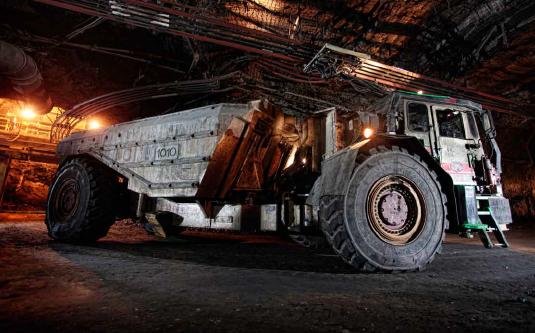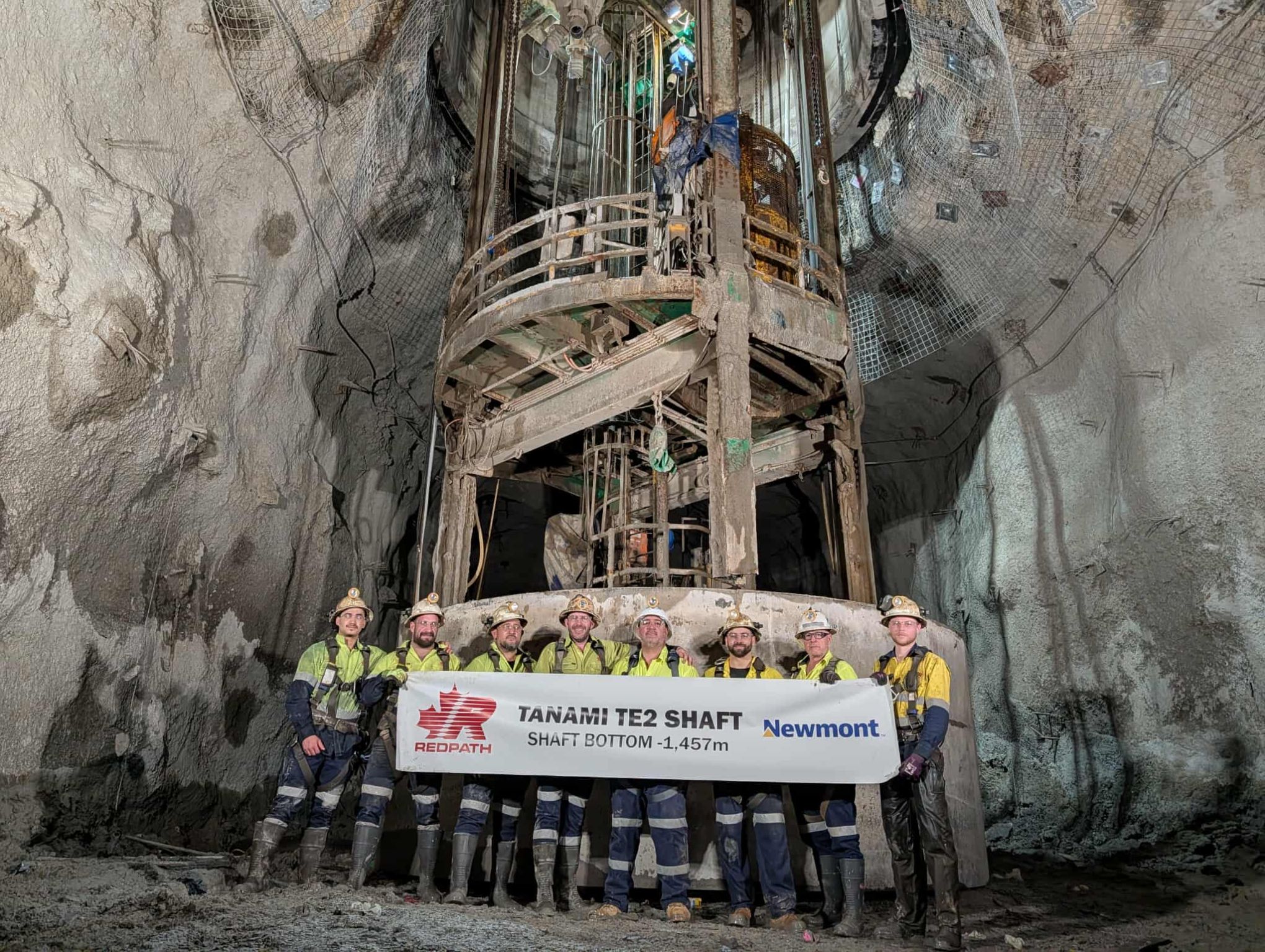
When the world’s second largest diversified mining company Vale acquired the iconic Canadian nickel miner Inco five years ago it was the beginning of the largest investment in Canadian mining in the country’s history, as Cory McPhee explains to Gay Sutton.
Superficially, the icy northern reaches of Canada and the hot arid deserts of Australia have little in common other than the language. Look more closely, and both benefit from enormous mineral resources that account for a significant portion of the national economy and an even greater percentage of their exports. Moreover, some of these resources have been mined for more than a century and a half. In both cases a number of famous mining towns and cities have sprung up – providing services, products, homes and entertainment for those working in some of the world’s least hospitable places.
The city of Sudbury in Ontario is one such place. With long cold winters and brief but warm and humid summers, it began as a simple mining camp in the rich geological region known as the Sudbury Basin. Today Sudbury is a city of some 158,000 people and its economy has diversified to include financial services, business, tourism, healthcare and education. But mining continues to play a significant role. According to figures produced by the Greater Sudbury Development Corporation last year, Vale – which can trace its history back to 1902 when Inco opened its first mine in Sudbury – is still the city’s largest employer.
This year Vale is celebrating the fifth anniversary of its venture into Canada and the global nickel business in late 2006, an event that saw Vale, the world’s second largest mining company, acquire Toronto-based Inco. In that short space of time the company has announced and embarked upon an ambitious program of investment and expansion in Canada, and the Canadian operations have taken on a new role within the global business.
“Inco was primarily a long-time nickel miner, the second largest in the world at the time of the acquisition,” explained Cory McPhee, VP corporate affairs. “With the Vale acquisition we maintained the head office in Toronto and repositioned it to manage the entire Vale base-metals business worldwide.” Among the portfolio of operations handled from Toronto are mines in New Caledonia, Indonesia and Brazil, and refineries in Wales, London, Japan, South Korea, Taiwan and China.
With this new global remit and with the financial backing of parent company Vale, the Canadian operation has been making major investments. Firstly, the previous focus on nickel is being expanded. “While we’ve been mining in Canada for over 100 years, our existing facilities offer some exciting potential resources, not only in nickel but also in copper and we’re looking to exploit that potential,” said McPhee. “So we aim to grow the copper business both here in Canada and globally. We’re also committed to entering the fertilizer business here in Canada.” A potash project is currently under development at Kronau, near the city of Regina in Saskatchewan, and is scheduled to go into operation in 2016.
It is, however, in the investment plan for the existing Canadian mining business that the Brazilian-based parent company is demonstrating its greatest commitment. The current operations comprise some six mines, a mill, a smelter and a refinery in Inco’s original home town of Sudbury, and this is supplemented by a second Ontario-sited refinery and packaging facility at Port Colborne on Lake Erie. Mining, milling, smelting and refining also take place at Thompson, Manitoba, where some 40 percent of the refinery’s current throughput is transported from Voisey’s Bay, an exciting new Vale mine located in Newfoundland and Labrador which went into operation in 2005 and includes its own concentrator and port facilities. All of this, however, is scheduled for improvement.
“On 17 November 2010 we announced a $10 billion investment program for Canada over the next five years. So we’re now one year in, and it’s progressing according to plan,” said McPhee. The company has based its current investment plan on a comprehensive business overview and nationwide development strategy. “We’re looking at the entire base metals operation as an integrated flow sheet,” he explained. “So instead of erecting a fence or silo around each operation and duplicating the infrastructure we’re looking at the entire asset base as one continuous loop.”
These investments are aimed at preparing the business for mining in the long-term. Incorporating some of the latest technologies, the various projects will strengthen the business infrastructure, improve operational efficiency and reduce the environmental impact. A new $3.6 billion hydro-metallurgical refinery is currently under construction at Long Harbour, Newfoundland and Labrador. “The Long Harbour refinery is scheduled for completion by 2013. By 2015, following a period of commissioning in Long Harbour, we intend to close our current smelter and refinery in Thompson, Manitoba. Thompson will then transition to purely mining and milling. Meanwhile, we’re looking at a number of ways to extend the life of our mining activity in Thompson, including a potential $1 billion investment in a new mine.”
The new Long Harbour processing plant will be the first to use hydro-metallurgical technology in conjunction with a sulfide-based nickel ore. Taken through each stage of development at the Vale research facility in Ontario, the technology has been proven and tested from bench scale through to demonstration plant, and will go a long way to satisfying the company’s environmental ambitions, as it will have a much smaller environmental footprint than a traditional smelter.
Approximately $3.4 billion of the $10 billion investment pot has been earmarked for projects in Ontario. One of these is a triumph of modern exploration technology. “We are in the process of reopening the Totten mine in Sudbury,” McPhee said. “This was a mine that had previously been considered mined-out, but we have been able to go back and deploy equipment that sends sound waves through the rock of the old workings, and has defined new resources that we had previously been unaware of. We are now in the process of redeveloping the mine. It’s due to open in 2013 and will have a mine-life of 20 years.” Costing in the region of $759 million, the redevelopment will create employment for some 130 people and will be the first mine Vale has opened in Sudbury in around 40 years.
The CORe project, currently underway at the Clarabelle Mill in the Sudbury Basin, is another example of the company’s use of the latest technology to improve the efficiency of its operations. “CORe stands for Challenging Ore Recovery, an acronym that doesn’t roll off the tongue too easily,” McPhee admitted. “The geology of the Sudbury basin is unique in that for every part of nickel there are eight parts sulfur, and dealing with that is quite challenging. The first step in the process is to reject a portion of ore with the highest concentration of sulfur at the milling stage. By improving our ore recovery with a new flotation system that uses state-of-the-art technology, we can use more of the ore and this will increase our ore recovery by 4 percent.” The impact of this will be to extend the life of the region’s mines as it makes nickel recovery possible from ore that previously would not have been considered economical to mine.
Perhaps the most important of all the major investments being made into the Canadian operations is a $2 billion improvement to reduce emissions at the Copper Cliff Smelter. “This represents the largest environmental undertaking in Sudbury’s history,” McPhee said. The project goes to the heart of the company’s long-standing campaign to improve the ecology of the Sudbury Basin, and builds on its already considerable achievements at the plant. “We have already reduced emissions from the smelter by 90 percent since the 1980s. At that time, our $600 million emissions reduction initiative was the largest environmental project in Canadian history to be solely funded by one company,” said McPhee. “Our current $2 billion investment is aimed at reducing emissions by a further 70 percent, and we believe it will have a very significant impact on the local community and the environment.”
A portion of the money will be spent constructing a new acid plant which will capture the sulfide gases that would otherwise escape to the atmosphere, and concentrate them into marketable liquid sulfur dioxide and sulfuric acid. The term marketable is perhaps academic, as the revenues generated from these sales are likely to be spent in transporting the products over considerable distances, so the acid plant would perhaps best be viewed as an environmental recycling process.
Social and environmental responsibility are very much at the center of Vale’s business strategy and investment policy, and the evidence for this is constantly on its doorstep. Mining and smelting in Sudbury dates back over a century, and the area has suffered enormously from the early mining practices and technologies. “Sudbury is essentially a living history of the environmental impact of old mining practices, and the growth of environmental responsibility,” McPhee said.
Looking back at the very early days of mining, for example, nickel ore was de-sulfured on enormous open air fires called open roast pits. These leaked toxic chemicals into the soil and liberated great clouds of sulfur dioxide which would roll across the community and countryside damaging health and forming what we now call acid rain that kills vegetation. So the clean-up process has been long and involved.
Dramatically cutting emissions from the modern processing plants over the last 30 years has had a major impact on the environment, and Vale has dedicated considerable time and resources to rehabilitating the damaged and barren lands. “For many decades we employed students to spread lime and grass seed on areas of stressed land to kickstart the regrowth of vegetation. And once we had achieved that in all the areas that were easily accessible we moved to aerial liming and seeding, in a process that’s not that different from crop dusting,” McPhee explained.
Interestingly, the company is putting some of the mined-out levels of its oldest and deepest active nickel mine to good use to help with this rehabilitation. “We are using some of the old levels in our Creighton mine, which is older than the company, as a tree nursery to grow trees underground using the natural geothermal heat which is constant all year round. During the harvest season we take those trees to the surface and plant them on stressed land as part of our environmental rehabilitation effort.”
The transformation has been painstaking and steady, and in 1992 the region-wide achievements in Sudbury were recognized by the United Nations at the 1992 Earth Summit. The results of these continuous and concerted efforts are not only easy to see – the countryside is greening up and the lakes which had previously been crystal clear and barren are now teeming with plant and fish life – but they are also being scientifically measured and analyzed.
As part of the program of rehabilitation the company is the principal sponsor and funder of the Vale Living With Lakes Centre on Lake Ramsey. This is home to the Co-operative Freshwater Ecology Unit, a group of scientists who are charting and quantifying the improvement in the aquatic environment, and developing new strategies to speed up the recovery process.
From the perspective of the Canadian aboriginal population, Vale is also very actively involved. At Voisey’s Bay in Newfoundland and Labrador, more than 50 percent of the workforce comprises Inuit and Innu people, as part of an effective impact and benefits agreement. The company is also supporting aboriginal education through programs such as the One Laptop One Child initiative that aims to get computer technology into the hands of aboriginal young people and the development of a secondary school mining curriculum in partnership with the National Aboriginal Achievement Foundation.
To promote health, fitness and wellbeing among the wider population in the areas where it’s operating, the company has, for example, donated $3 million to a regional Community Wellness Centre in Thompson, Manitoba. It has just announced a $1.25 million contribution to a Health and Recreation Centre for the community of Port Colborne, and sponsors the Sudbury Cinefest, a very popular annual film festival. Meanwhile, visitors to the Canadian Museum of Nature in Ottawa will undoubtedly enjoy a visit to the Vale Earth Gallery. Displaying an enormous collection of rock samples, the gallery is the museum’s geological exhibition, and includes a history of mining in Canada, the products that result from it and the industry’s issues and needs.
The five years since Inco was acquired by Vale have been an interesting journey. A massive program of investment has been launched across the Canadian operations, aimed at preparing the company for the future. “There have been bumps along the way,” McPhee said, “but everything is coming together, and we believe we have a bright and very long-term future here in Canada.”
DOWNLOAD
 Vale-NA-Jan12-Bro-s.pdf
Vale-NA-Jan12-Bro-s.pdf













